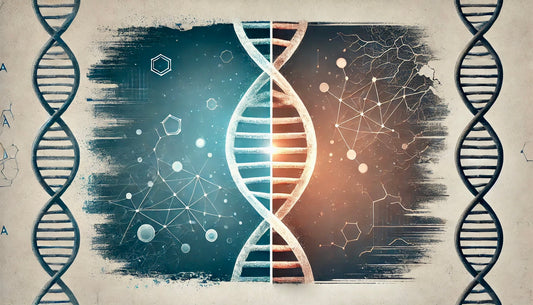What is lactose intolerance and how do we test for it?
When we are born all mammals have the ability to digest lactose. Lactose is a sugar found in milk, which is the main food source for babies until weaning. It is also, therefore, found in cheese, cream, and other dairy products. For those who can digest lactose, it is digested and absorbed in the small intestine where it is broken down in to its basic sugar components, glucose and galactose, which we use to generate energy. This process occurs with the help of the enzyme lactase.
After weaning, the lactase enzyme found in the small intestine gradually decreases. Individuals who continue to produce adequate amounts of lactase, known as Lactase Persistence, will be able to ingest milk and other dairy products without any effects. Those who don’t may experience symptoms related to lactose intolerance. Typically, these are bloating, abdominal pain, flatulence, and in more severe cases diarrhoea. These gut symptoms are a result of undigested lactose that passes through the small intestine into the large intestine, which becomes a feast of sorts for the bacteria there. This then helps the bacterial population grow, which produces gas.
What does this gene do?
The LCT gene encodes for lactase. A neighbouring gene, called MCM6, is responsible for the regulation of the lactase gene. Because of this, the ability to digest lactose, or lack thereof, is influenced by your genetics. Lactase persistence is linked to homozygous (i.e. two of the same) gene variants, which has appeared in the last 10,000 years within some populations. This emergence occurred after the transition from nomadic to agricultural farming, where cattle were domesticated and the consumption of their milk increased. This a prime example of how our cultural exposure can have an influence on our genetics and evolution over millions of years. A lot of Norther Europeans can break down lactose but the majority of the world's population cannot.
You can do a DNA test to see if you have still got the ability to break down lactose.
If you have the GG genotype result, it’s possible that a very small amount of lactase will be produced when compared to AG or AA results. This may result in discomfort after consuming dairy. The GG genotype is observed in 70% of African populations and is common in Asian populations.
If you have a AA genotype, this most likely means you’ll produce enough lactase to breakdown lactose. AA genotypes are mostly observed in Caucasian populations at 60%.
If your result is AG, the amount of lactase production is unclear but you likely produce enough lactase to break down a normal amount of dairy.
NOTE: If these results don’t correlate with your tolerance or intolerance, this is not uncommon. It is possible to not experience symptoms related to lactose intolerance with the CC genotype as the amount of lactose individuals can tolerate varies from person to person. It just means you more likely to be lactose intolerant. If you have any concerns, the best thing to do would be to discuss further with your healthcare professional for a more definitive test to determine this results if warranted.
Further Reading:
Lactose intolerance: symptoms and treatments:
https://www.nhs.uk/conditions/lactose-intolerance/
LCT gene:
https://www.ncbi.nlm.nih.gov/pmc/articles/PMC3401057/






